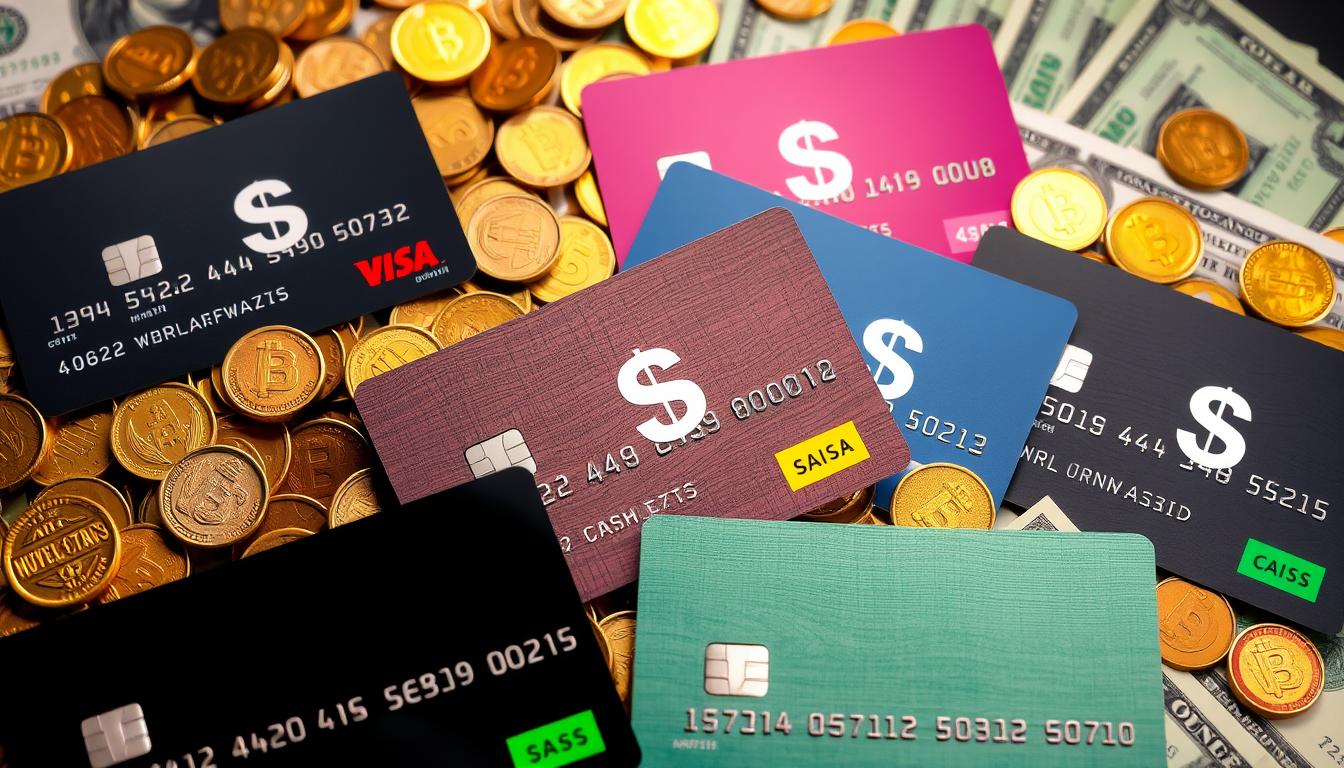The US trade balance shows the difference between what America sells and buys from other countries. A trade surplus means the US sells more than it buys. A trade deficit means the opposite. It’s crucial to know about trade balance dynamics to understand their effect on the economy. Studies from the National Bureau of Economic Research help us see how trade policies and global events play a role.

GBTI Visa Gold Card

We’re diving deep into the US trade balance. We will look at past trends, present data, and predictions for the future.
Anúncios
Introduction to Trade Balance Dynamics
The trade balance is a key economic sign. It shows the gap between what a country sells abroad and what it buys. It’s vital to understand this to see how it affects economic growth and stability. Nowadays, there’s a lot of talk about trade deficits. This is because of changes in trade policies and international deals.
Anúncios
Recent changes in tariffs and trade agreements, particularly under the Trump administration, have created a lot of debates. These changes affect how countries do business with each other, changing the flow of goods and services. If a country imports more than it exports for a long time, it might worry about national debt and weakening local industries.
Knowing how trade works is important for businesses and policymakers. This knowledge helps them deal in complex global markets. How trade deficits affect a country’s money value shows how linked these issues are. With global competition growing, it’s crucial to understand trade’s role in jobs and economic growth. This understanding is key to making good trade policies.

Historical Overview of the US Trade Balance
Looking into US trade history shows us how trade balances changed over years. In the 1970s, the US began to see trade deficits, unlike after World War II when surpluses were common. This change was due to global economic shifts and trade agreements.
In the 2000s, the trade deficits hit a high, being about 6% of GDP. The North American Free Trade Agreement (NAFTA) and China joining the World Trade Organization (WTO) played big roles then. These events changed how countries trade and moved goods and capital, making deficits worse.
Trade surpluses and deficits in US history have affected its economy. When the US had surpluses, its economy did well. But ongoing deficits made policymakers and economists worry about future impacts.
Key Factors Influencing Trade Balance
The trade balance of the United States is shaped by several critical factors. These reflect both what’s happening at home and around the world. Factors like economic policies and globalization impacts are key. They play huge roles in whether we see trade imbalances. Looking into these can tell us a lot about trade agreements and how they affect the economy.
Economic Policies Impacting Trade Balance
Economic policies have a big impact on the trade balance. Things like tariffs, trade agreements, and changes in rules can really shake things up. For instance, adding tariffs can discourage imports but encourage buying American-made products. Altering trade agreements can open up new markets or limit access to them. This creates changes in how much we export and import. A study by Alessandria and Choi shows how trade barriers can change trade dynamics. It highlights how smart policymaking is crucial for a balanced trade scenario.
Effects of Globalization on US Trade Balance
Globalization has changed how countries do business with each other. It makes production and distribution more efficient. But, it also brings challenges in keeping a favorable trade balance. With more foreign goods coming in, local industries face more competition. This can make trade imbalances bigger. As businesses look beyond our borders, they become more entwined with other economies. This changes the US trade landscape a lot.
Trade Balance and the Real Exchange Rate
The trade balance and real exchange rate are closely linked. They are key to understanding how economies work. Changes in currency values can affect trade by influencing exports and imports. We will look at how the J-Curve Effect shows changes in trade balance after a currency loses value.
The J-Curve Effect Explained
After a currency’s value goes down, the J-Curve Effect suggests trade balance may get worse, then better. This happens because import and export deals don’t change right away with new exchange rates. At first, more expensive imports might cancel out any gains from selling more exports.
This delay can make it tricky for those who make policies. Researchers like Alessandria and Choi have shown how the real exchange rate changes trade balance over time. Knowing this helps in making good trade policies.
Current Statistics on the US Trade Balance
The current US trade balance shows a deficit close to 4% of GDP. This trend is worrisome and points to struggles in balancing exports and imports. The US Bureau of Economic Analysis shows that uneven trade with countries like China has had a big impact.
There have been ups and downs in both exports and imports recently. A rise in demand for imported goods and a lag in US export growth play a big role. This situation is made worse by differences across regions, highlighting the need for targeted trade policies.
Trade Balance and Manufacturing Employment
The link between trade balance and manufacturing jobs is key to understanding the US economy’s health. Trends in manufacturing jobs can show us how the whole economy is doing. This is especially true in areas that depend a lot on manufacturing, like the Rust Belt.
Looking at how trade policy affects things shows a clear connection to job losses in manufacturing. This happens as trade deficits get bigger over time.
Effects of Trade Policies on Manufacturing Jobs
Trade policies have a big effect on manufacturing employment, and not always in a good way. The increase in imports has made things tough for US manufacturers, leading to more job losses.
Studies have shown that unfair trade practices make it hard for local businesses to compete with overseas ones. This situation makes it harder to find jobs and can make things worse for communities already struggling.
- Trade deficits correlate with decreasing demand for domestic products.
- Manufacturing sectors are particularly vulnerable to low-cost foreign competition.
- Job displacement poses challenges for many families and communities.
Policymakers need to understand this trend to help protect jobs and encourage competitive manufacturing. It’s important to act to lessen the negative outcomes of trade policy on jobs. This can help stabilize areas that have been hardest hit by job losses.
Challenges to Achieving a Balanced Trade
Making trade even is tough due to economic and political issues. Countries may play with their currency values to mess with fair play. This lets them sell more abroad by making their products cheaper, making it hard for others, especially the U.S., to keep up.
The Role of Currency Manipulation
Currency changes are big obstacles in fair trade. Countries lower their currency value on purpose to make their products cheaper worldwide. This leads to them selling more, while countries buying these goods find it hard to compete. Discussions on this issue call for tighter rules and working together globally.
Impact of Tariffs on Trade Balance
Tariffs shake up world trade. The tariffs under Trump were meant to help U.S. companies, but they caused extra costs and inflation. Also, other countries hit back with their tariffs, messing up supply chains. This makes balancing trade even harder.
Future Outlook for the US Trade Balance
The forecast for the US trade balance is drawing lots of attention. Economic experts suggest a complicated future. Domestic and worldwide policies, along with currency trends, will affect trade.
Analysts say globalization will change how we handle trade. We’ll need new strategies to deal with these challenges.
To balance trade, experts say tariffs alone won’t work. It will take better infrastructure, new technology, and strong global partnerships. These things will be key:
- Changes in global supply chains could change the US’s trade partners.
- The US might make big changes to boost competitiveness.
- How currencies are valued could change how we trade.
- Policy changes could make trade more sustainable and fair.
Everyone watching these trends will see them shape the US trade balance. Being flexible with policies and planning ahead is vital. It’s the way to tackle now and the future’s challenges.
Conclusion
The US trade balance plays a key role in our economy’s health and stability. It shows how shifts in history and today’s global dynamics change our trade. This trade outlook is more than about buying and selling. It shows if our country is competitive and resilient economically.
Handling international trade comes with its challenges. Imbalances in trade show why good policies matter. We need policies that support fair trade. These should work well with our global partners. We must address things like currency issues and changing trade rules together.
To deal with trade imbalances, the US must be forward-thinking. Dialogue and agreements with many countries are essential. This will help improve our economic future. It ensures our trade balance fits our wider economic aims.
FAQ
What is the trade balance?
Why is understanding the US trade balance important?
How have historical trends influenced the current US trade balance?
What are some key factors that shape the US trade balance?
What is the J-Curve Effect in relation to trade balance?
What are the current statistics regarding the US trade balance?
How does trade balance affect manufacturing employment in the US?
What challenges exist in achieving a balanced trade?
What is the future outlook for the US trade balance?
Conteúdo criado com auxílio de Inteligência Artificial


